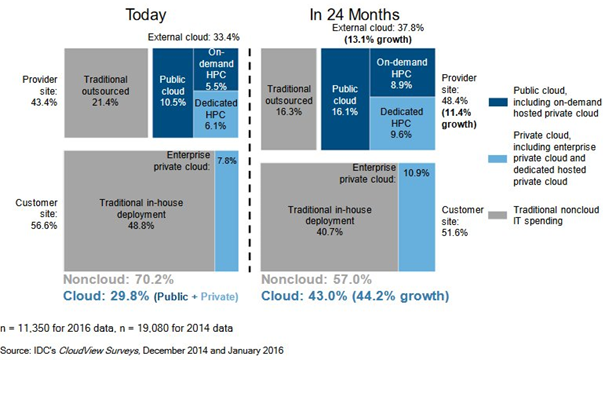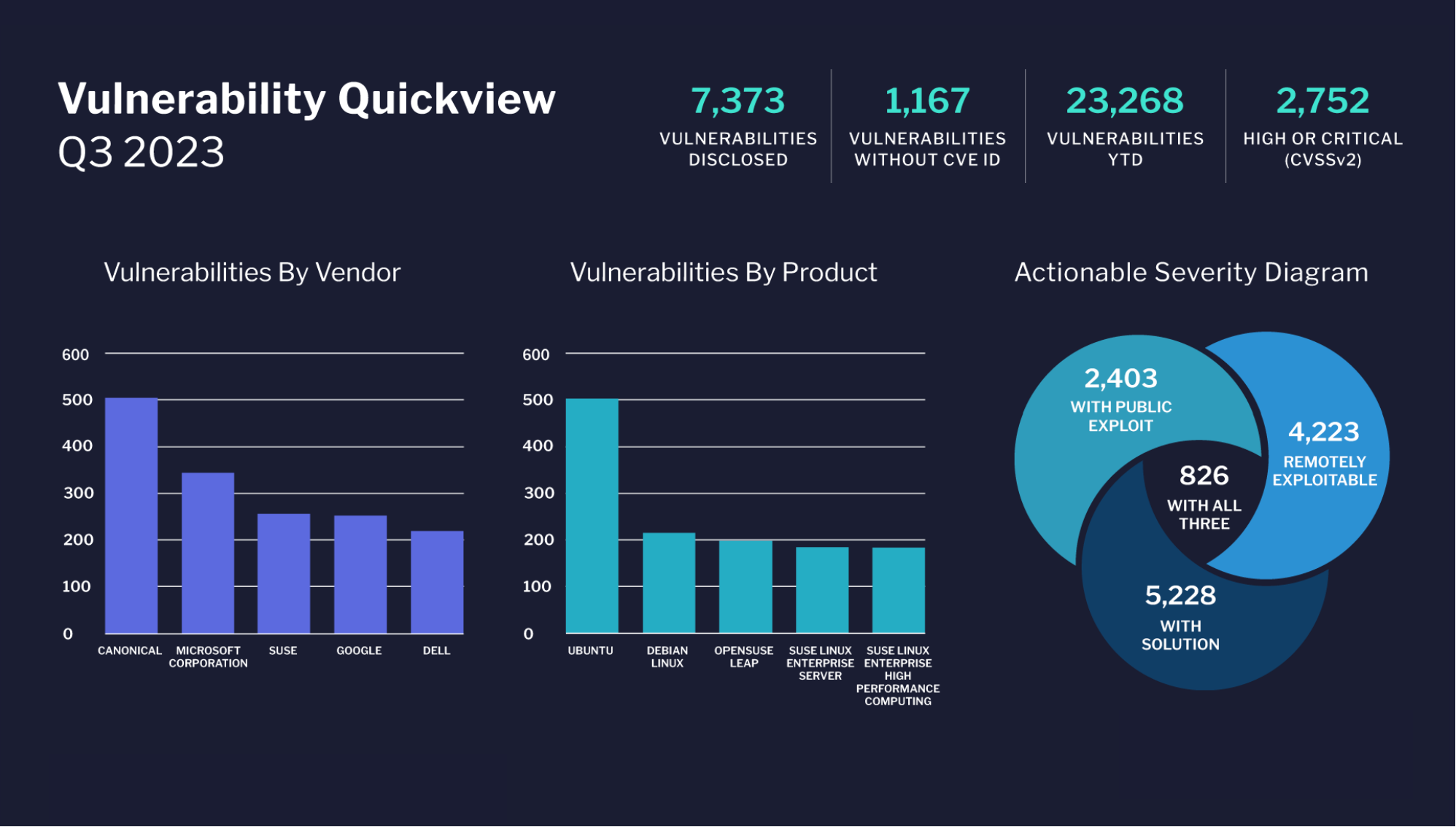Gartner has recently predicted that by 2020, a corporate “no-cloud” policy will be as rare as a “no-internet” policy is today. CIOs will increasingly leverage a multitude of cloud computing providers across the entire IT stack to enable a huge variety of use cases and meet the requirements of their business unit peers. Indeed, the tides are shifting toward a “cloud-first” or even “cloud-only” policy. This is especially true as far as software design, planning and development goes. However, the notion is gradually being extended toward the wider IT landscape as companies advance with their digital strategies and fully leverage data-centric and IoT-based business models, and utilize 3rd platforms that interface a myriad of devices and data streams.
According to Gartner’s research, companies decrease their spending on conventional non-cloud deployments to boost their cloud activities and facilitate their digital strategies. Since 2011, the Infrastructure-as-a-Service (IaaS) market has been impressively growing by more than 40 percent in revenue per year, and is forecasted to again almost triple in size between 2016 and 2020. By then, the vast majority of virtual machines (VMs) will be deployed by IaaS providers.
As for share of wallet, the budget allocated for non-cloud IT will decline from 70.2 percent in 2016 to 57 percent by 2018, suggests research from IDC. In turn, the budget allocated to cloud-related deployments will increase from 29.8 percent in 2016 to 43 percent in 2018, representing a rise of 44.2 percent.

Figure 1: Shift in spending to provider site and cloud-based models
The public cloud market continues to skyrocket with IaaS to nearly triple, and PaaS and SaaS to roughly double by 2020
The huge growth that has been observed across the public cloud space over the past few years is going to continue in 2017, with revenues projected to total US$246.8 billion, up 18 percent compared to US$209.2 billion in 2016, according to Gartner’s projections. The strongest contributor will be the IaaS category, which is forecasted to grow by 36.8 percent in 2017 and reach US$34.6 billion. Software-as-a-Service (SaaS) is projected to grow 20.1 percent and reach US$46.3 billion. Overall, the public cloud space is projected to reach US$383.4 billion in revenues by 2020.
Table 1: Worldwide Public cloud services Forecast (Millions of Dollars)
|
2016 |
2017 |
2018 |
2019 |
2020 |
|
| Cloud Business Process Services (BPaaS) |
40,812 |
43,772 |
47,556 |
51,652 |
56,176 |
| Cloud Application Infrastructure Services (PaaS) |
7,169 |
8,851 |
10,616 |
12,580 |
14,798 |
| Cloud Application Services (SaaS) |
38,567 |
46,331 |
55,143 |
64,870 |
75,734 |
| Cloud Management and Security Services |
7,150 |
8,768 |
10,427 |
12,159 |
14,004 |
| Cloud System Infrastructure Services (IaaS) |
25,290 |
34,603 |
45,559 |
57,897 |
71,552 |
| Cloud Advertising |
90,257 |
104,516 |
118,520 |
133,566 |
151,091 |
| Total Market |
209,244 |
246,841 |
287,820 |
332,723 |
383,355 |
Source: Gartner (February 2017)
Another driving force is application modernization. Companies are modernizing their application landscapes in an effort to provide a better, richer and more sophisticated customer experience. Very often, the cloud is the hosting location of first choice – initially for test and development, but increasingly so for production as well.
In this context, the agile development methodology is gaining popularity and enjoying high rates of adoption. Aiming to shorten release cycles, increase quality, reduce complexity and minimize costs, many CIOs are trying to take advantage of it. According to a recent study by Interop, eight out of ten IT executives have already implemented or are planning to implement DevOps. However, building the capabilities is not exactly child’s play. The prime barriers for adoption include a lack of demand from the business, followed by a lack of expertise and resources. However, those who succeeded listed tangible benefits (cost reduction or increased revenues) as well as better collaboration, more frequent releases, and higher quality and performance, among other things.
Going forward, the heavy cloud adoption will continue for the foreseeable future. The growing demand for developing mobile apps, deploying micro services, and utilizing data-centric business models as well as the emergence of industry-specific clouds and marketplaces will gradually lead to a “cloud-first” and “cloud-only” approach.
Yet the cloudification comes with a number of implications. One of the most prevailing challenges for CIOs will be the management of multiple disparate cloud computing and network Service Providers. The focus will change from operating IT toward orchestrating IT and enabling new digital use cases. This includes building a central data repository and cockpits to manage and monitor the estate, enforcing standards and global policies across a bunch of different providers, optimizing deployment processes to ensure swift commissioning and decommission of IT resources, developing an ecosystem with a range of strategic alliance partners rather than just having a client-supplier relationships, as well as enabling and facilitating new digital business models.
By Marc Wilczek





